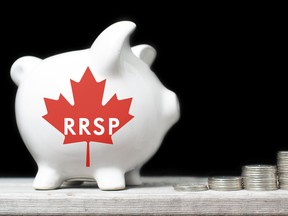How to take advantage of the new tax-free first home savings account
Jamie Golombek: Here's what you need to know about Canada’s newest registered savings plan

Reviews and recommendations are unbiased and products are independently selected. Postmedia may earn an affiliate commission from purchases made through links on this page.
Article content
April 1 marked the official launch date of the tax-free first home savings account (FHSA), Canada’s newest registered savings plan. As financial institutions start offering these in the weeks and months ahead, here are five things you need to know to take full advantage of these new plans.
Tax-free in; tax-free out
The 2023 federal budget description of “tax-free in; tax-free out” succinctly summarizes the attractiveness of the FHSA, which gives prospective first-time homebuyers the ability to contribute up to $40,000 and save on a tax-free basis towards the purchase of a first home in Canada.
The FHSA combines the best features of both the registered retirement savings plan (RRSP), which is a tax-deductible contribution, and the tax-free savings account (TFSA), which is the tax-free withdrawal of all contributions, investment income and growth earned in the account when used to buy a first home.
The FHSA can remain open for up to 15 years or until the end of the year you turn 71. Any funds in the FHSA not used to buy a qualifying home by this time can then be transferred on a tax-deferred basis into an RRSP or registered retirement income fund (RRIF), or withdrawn on a taxable basis.
What’s a first-time homebuyer?
How much can I contribute?
If you qualify, you’re able to contribute as much as $8,000 per year, up to the $40,000 lifetime contribution limit. There’s a penalty tax of one per cent per month for any overcontributions. The annual limit applies to contributions made within a particular calendar year since, unlike RRSPs, contributions made within the first 60 days of a subsequent year can’t be deducted in the current tax year.
And, just like RRSP contributions, you don’t have to claim the FHSA deduction in the year you make the contribution. The contribution can be carried forward indefinitely and deducted in a later tax year, which may make sense if you expect to be in a higher tax bracket in the future.
Don’t have the cash to contribute $8,000 per year to a FHSA? No problem. The rules permit you to transfer funds from an existing RRSP to an FHSA on a tax-free basis, subject to the FHSA annual and lifetime contribution limits. These transfers aren’t tax deductible (you were already entitled to claim a tax deduction when the funds were contributed to your RRSP), and the transfers won’t reinstate your RRSP contribution room.

The rules also permit you to carry forward any unused portion of the year’s annual contribution limit, up to a maximum of $8,000. This means that if you contribute (or transfer) less than $8,000 in a given year, you can then contribute the unused amount in a future year (up to a maximum of $8,000) in addition to your annual contribution limit of $8,000 (subject to the $40,000 lifetime limit). Note that carry-forward amounts only start accumulating after you open an FHSA for the first time.
As an example, let’s say Jake contributes $1,000 to his FHSA in 2023. In 2024, he’ll be able to contribute another $15,000 to his FHSA (that is, $8,000 for 2024, plus the unused $7,000 of room from 2023). However, if he fails to contribute anything further in 2024, he would be limited in the following year to $16,000, comprising the $8,000 for 2025 and $8,000 of carry-forward room from 2024.
What if you don’t buy a home?
Your FHSA can remain open for up to 15 years or until the end of the year when you turn 71 years old, whichever comes first. Any funds left in the FHSA that are not used to buy a qualifying home before closing the FHSA can be transferred on a tax-free basis to an RRSP (without impacting your RRSP room) or RRIF, or will be included in income.
This means that for qualifying first-time homebuyers, contributing to an FHSA is truly without risk (ignoring any risk taken on how the funds in the FHSA are invested). If you don’t end up buying a home, then you effectively get another $40,000 (plus growth) of RRSP room and enjoy up to a 15-year tax deferral. All renters who qualify should consider contributing $8,000 to an FHSA rather than to their RRSP even if they don’t plan to ever to buy a home because they essentially get additional RRSP room.
What about the Home Buyers’ Plan (HBP)?
Good news. The HBP, which lets first-time homebuyers withdraw up to $35,000 from an RRSP to buy a first home and pay it back, interest free over 15 years, will continue to be available. Under the final FHSA rules, the government now permits you to participate in both the HBP and the FHSA for the same home purchase, something that wasn’t originally allowed when the rules were first released.
Jamie Golombek, CPA, CA, CFP, CLU, TEP, is the managing director, Tax & Estate Planning with CIBC Private Wealth in Toronto. Jamie.Golombek@cibc.com.
_____________________________________________________________
If you liked this story, sign up for more in the FP Investor newsletter.
_____________________________________________________________









Postmedia is committed to maintaining a lively but civil forum for discussion. Please keep comments relevant and respectful. Comments may take up to an hour to appear on the site. You will receive an email if there is a reply to your comment, an update to a thread you follow or if a user you follow comments. Visit our Community Guidelines for more information.